Between Horizons is a narrative 2.5D sci-fi detective adventure by DigiTales Interactive. Players embark on a journey aboard the space vessel Zephyr, tasked with colonizing a distant planet. A new threat lurks onboard the ship and it’s only up to you to uncover it by solving a series of criminal cases. There will be many moral choices to deal with along the way and your actions will determine the course of the whole mission. Will law and order prevail, or will you side with those who seek change through any means necessary?
The main character of Between Horizons is Stella, the daughter of the chief of security. She's trained to take over her father's role on the Zephyr, a colonization vessel en route to a distant planet Euros-d. The mission they are both part of aims to establish a new home on Euros-d. However, the ship is already on its way for 33 years and it will take more than a hundred years to reach its destination. Zephyr is equipped with advanced technology, including farms, recycling stations, and reproduction wards, everything to provide basic necessities for its 1300 passengers. But the people who originally boarded the ship will not live long enough to see the new planet. Their children often lack the same dedication to the mission and there is a growing discontent with the rules set up by the leaders who stayed back on Earth.
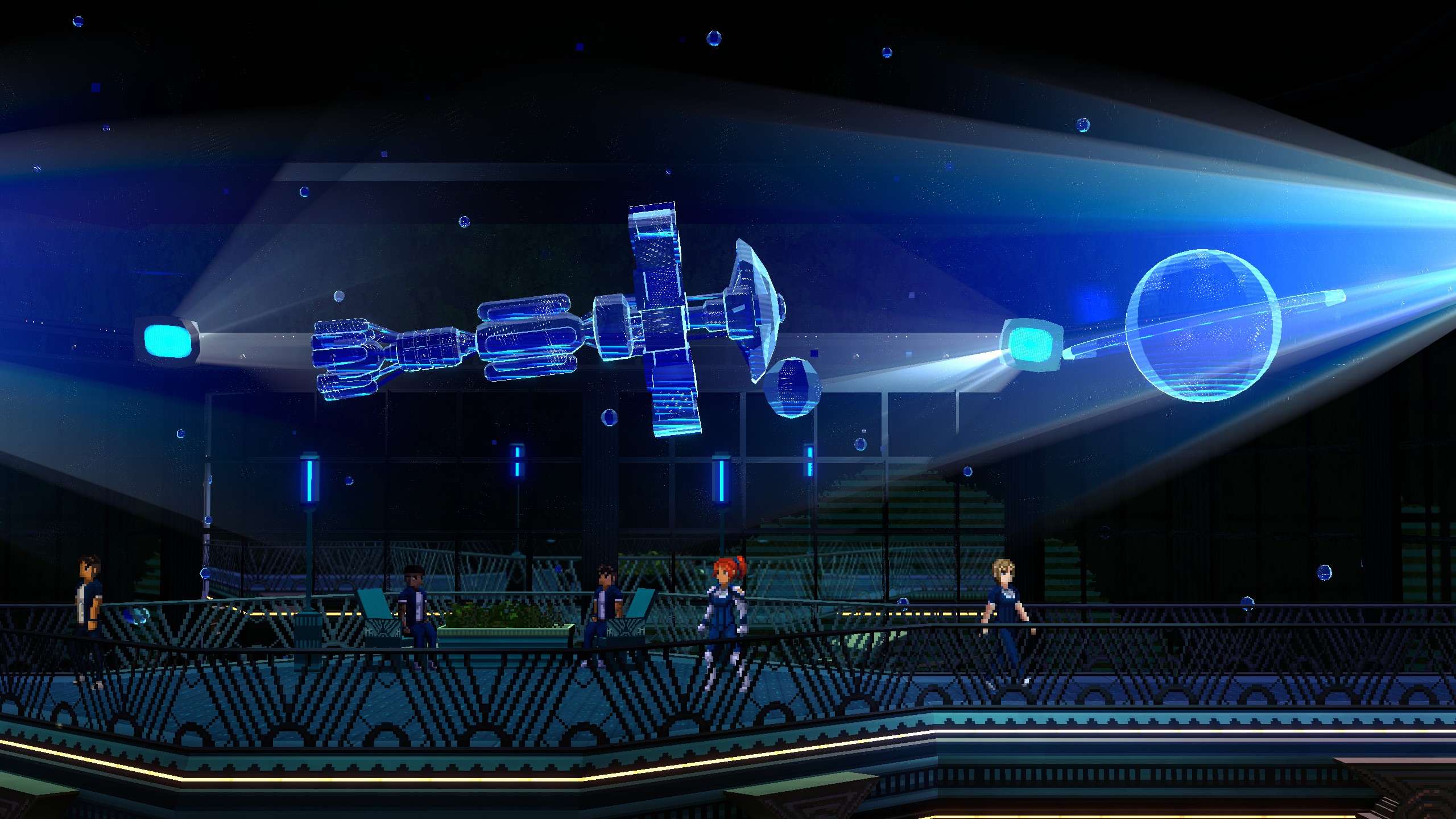
Elementary, my dear Watson
Your first task will be to investigate a case of someone breaking into the ship’s network area. This case serves as a tutorial into the investigation process. You have access to a PDA that stores data in three important files. The Cases file shows your open cases and relevant hints you managed to collect. In this file you also have a list of all possible solutions for the case - if you’re for example looking for a person who broke into the room, there will be a list of all characters and you have to choose one person, that you think is the culprit.
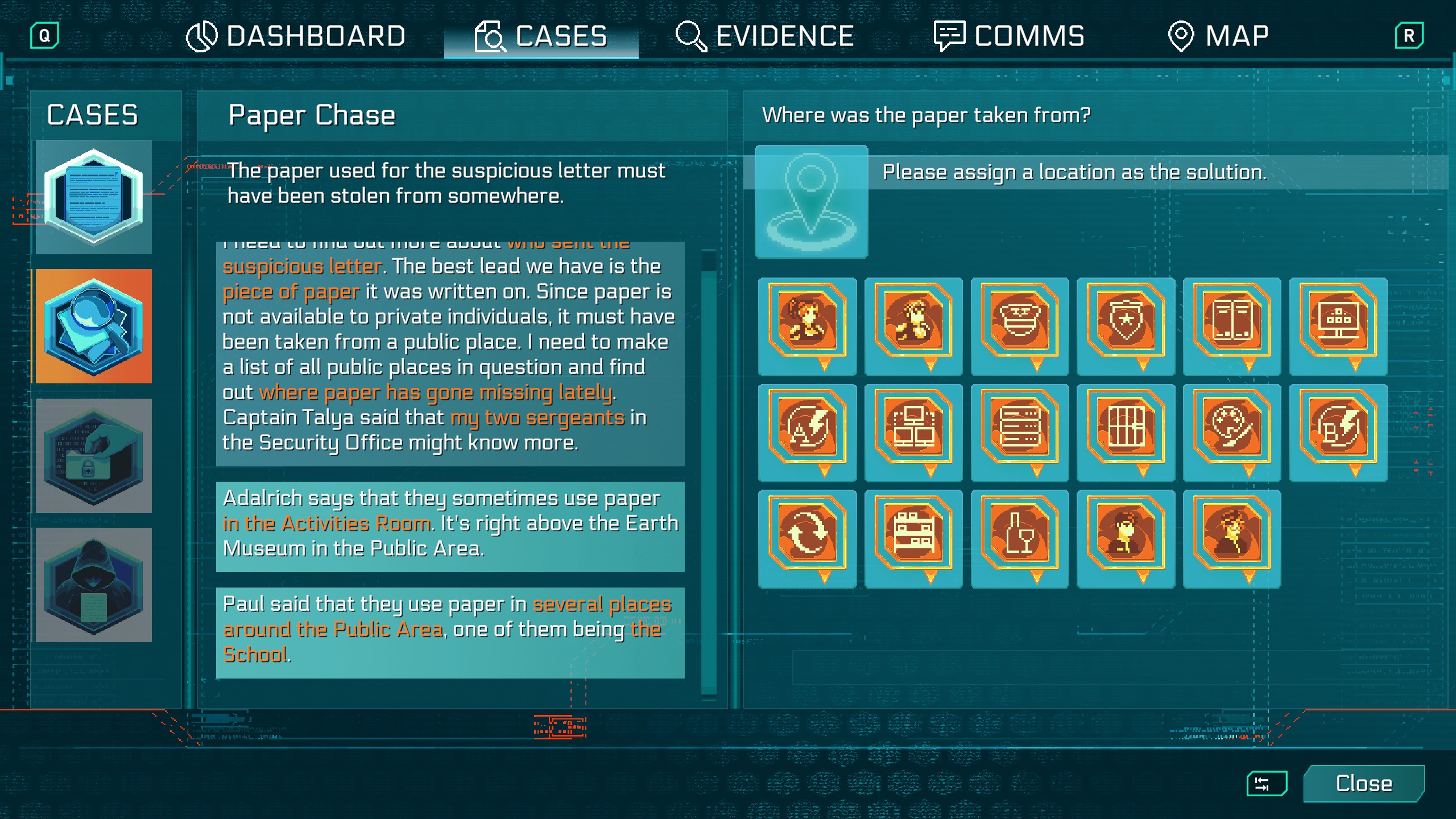
Then there is an Evidence file, which stores all the data you collect, regardless of the relevance to a certain case. There will be a list of all characters and all rooms that you visit on the ship and also items that you found during your search. To solve each case, you have to find as much evidence as possible. Sometimes even things that you find right at the beginning of the game, will help you solve a case that comes much later in the game. I found it pretty cool and rewarding when I was able to connect a seemingly insignificant detail from the introductory chapter with a case that I discovered by the end of the game and I was able to solve the case thanks to it. The negative side of this is, that the game gives you a ton of data to work with, but not many options on how to sort through it. Two basic filters allow you to view evidence by categories, but in some cases, I wished there was a search option in the evidence tab. For example, at one point I was looking for a person named Alex. The filter allowed me to narrow the evidence to all the characters, but since I didn’t remember what Alex looked like, I had to manually click through all the characters (there are over 40 of them) and find the guy I was looking for, because the evidence only shows portraits of characters, not their names (you have to open their profile to see the name and other details). Surely those high-tech PDAs could have a full-text search.
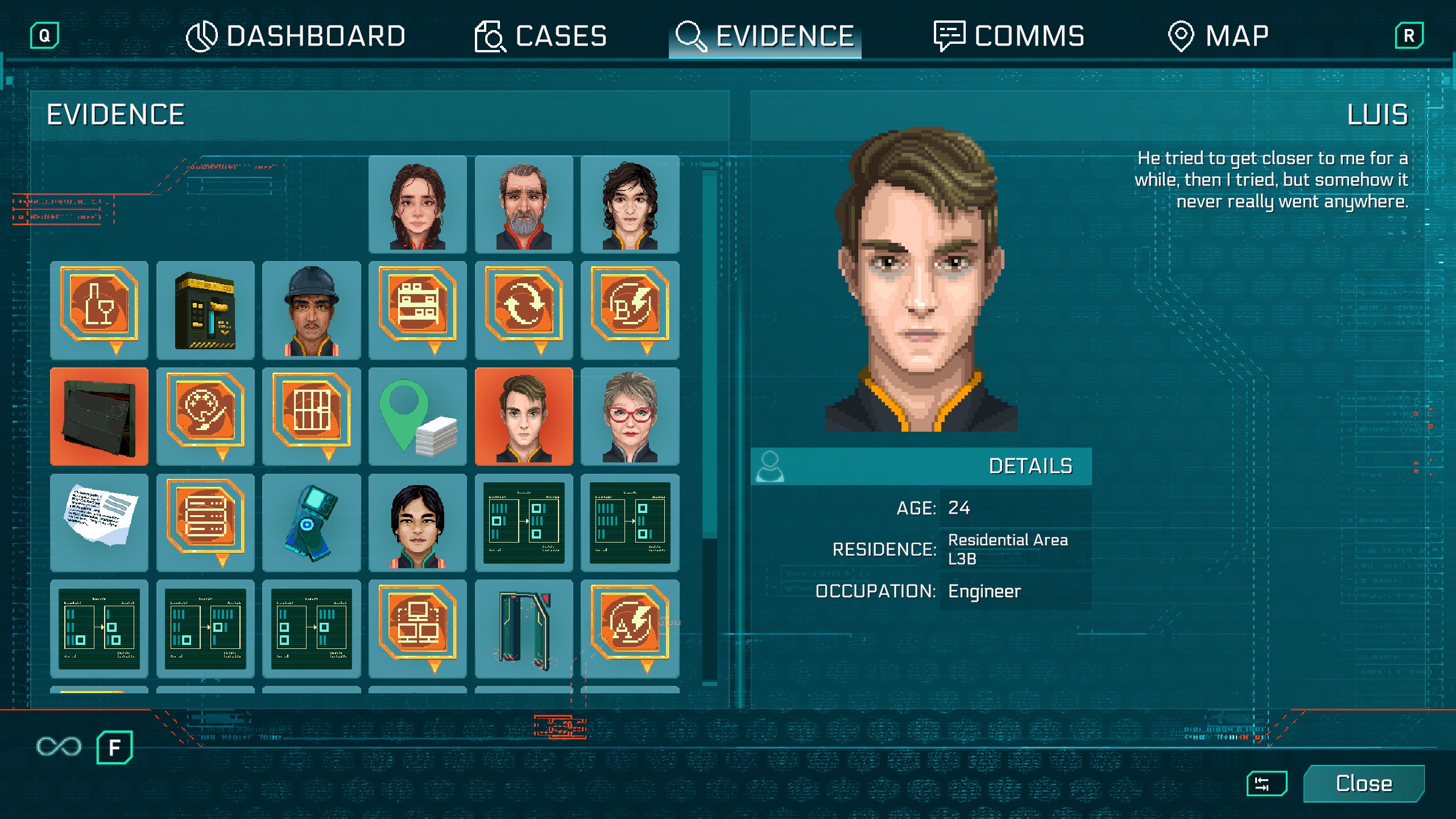
My pet peeve in this game is the particular way how the game forces the player to gather evidence. Your character has some sort of “detective sense” where you press a button and “ping” your surroundings, highlighting objects that you can interact with. Without highlighting the evidence first, you can’t interact with it. So in my first case, I entered the crime scene, talked to a witness, and immediately noticed something suspicious lying in the corner. Full of excitement, I ran up to the thing and wanted to pick it up, but nothing happened. Only after using the “ping”, was I able to pick up the suspicious thing and have it added to my evidence list. I always felt like detective games are mainly about attention to detail and being forced to highlight all the evidence takes away that feeling of success when you find some hidden detail. I understand why the authors did this, because the Zephyr is pretty large to explore and there are many many details that could potentially mislead or stall the player, especially when the ship gets damaged and debris is lying everywhere. But having the sense of exploration stripped away from the case-solving just didn’t work for me.
Further, you can gather evidence by talking to other colonists and showing them the evidence that you have already found. Every conversation you have with other characters is stored in the Comms tab, so you don’t have to write notes about every bit of information others tell you. Then there is also a map that shows you your position aboard the Zephyr, fast-travel points, and accessible rooms. The habitable area of Zephyr is designed as a ring with four floors that are reachable via stairs or elevators. Even with the fast travel/train stations, which take you to one of the four ship sectors, I sometimes felt like there was a lot of running back and forth if I was stuck with a case and trying to find some clue or show it to various characters in different parts of a ship.
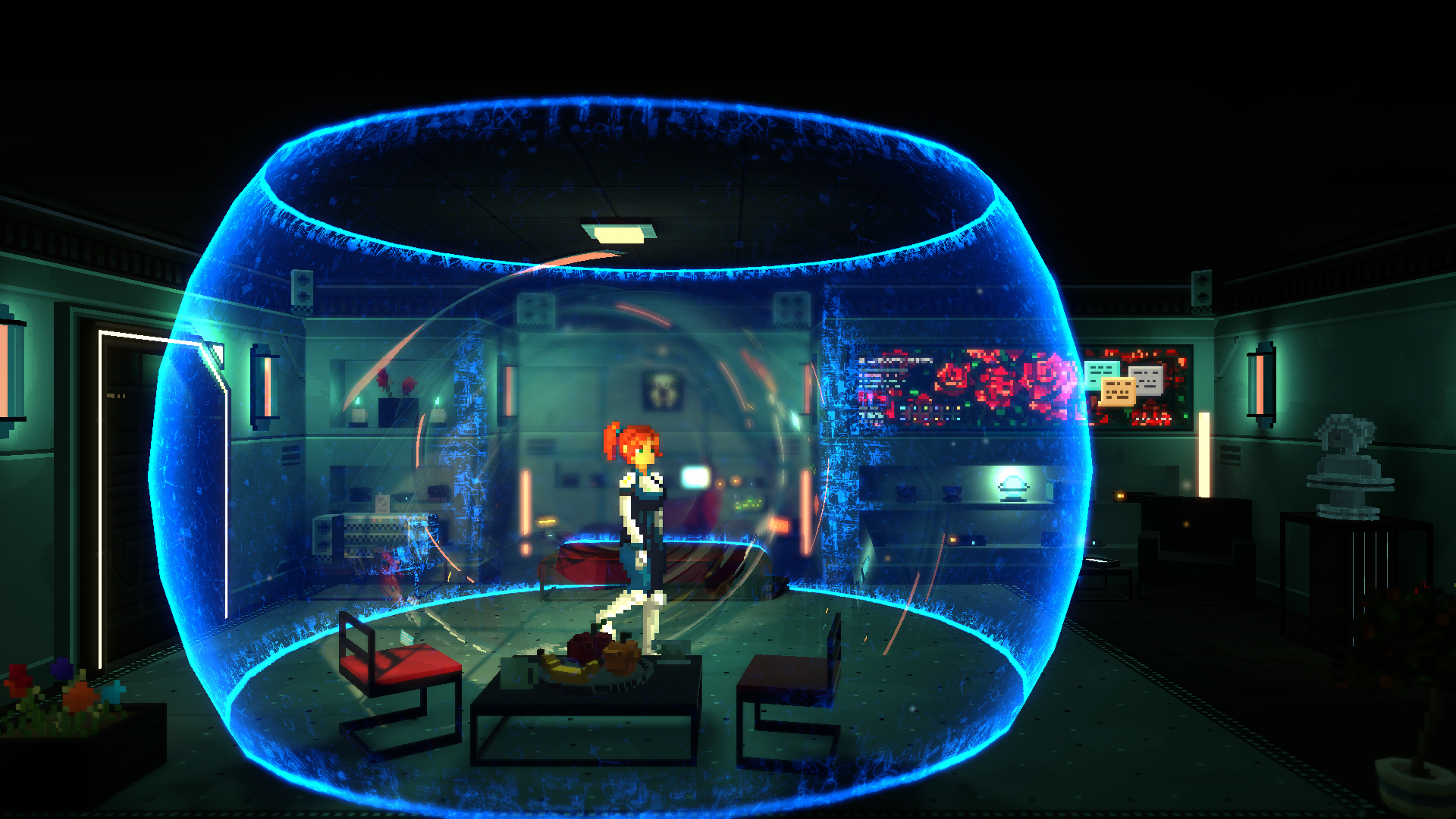
No going back
Speaking of being stuck, the way how the game handles the detective work is pretty unique and it is very closely tied to the story. In many games, there is simply a puzzle/case, which you have to solve to be able to progress and if you’re stuck, the game throws a hint at you or outright allows you to skip the puzzle. However, Between Horizons has no hint system, which would allow you to skip parts of the investigation so you really have to do your best to solve the case. You can submit a solution even if you’re not sure of the right answer and then the game continues, with the story shaping around whether you solved the case correctly or not. There are no manual saves for the game either, so you have to stick with your decisions and mistakes. There are several ways in which the story can go, based on your moral choices and successful or failed cases, so the game has some replayability.
After solving the first case with guidance from Sella’s father, things start to escalate quickly. You both receive a message from Earth, which hints that there is something weird going on. Then Stella’s father gets killed, the ship gets damaged and somebody is spreading messages between colonists with the aim to undermine the mission’s leadership. So even though Stella is grieving her father, she has to take his place as the head of security and deal with one case after another. And it’s not just criminal cases you have to deal with. There are also moral questions that you have to figure out and each decision can and will influence the outcome of the story. For example, when your investigation takes you to the hospital, you encounter Stella’s friend who begs the doctor for medication for her pet who got injured in a mass accident. Will you convince the doctor to break the rules for an animal, or will you refuse to help your friend and save the medication for the injured colonists? By default, these decisions are also timed, but I very much welcomed the accessibility option that allowed me to turn the dialogue timers off, to have more time to think about everything. Some dialogues were truly thought-provoking and I don’t think they deserve some random answer that I quickly pressed because of time constraints.
What can you see on the horizon?
The game uses a blend of pixel art mixed with 3D environments and modern VFX. This is a bit strange, considering the high-tech environment of the Zephyr. But it worked and I really felt like I was running around the spaceship with all those bright lights, screens, and holograms. Sometimes I wished that the characters were more detailed, but with every dialogue, you can see their portrait with facial expressions, which remedies the issue a bit. Most of the dialogues lack voice acting. There are only certain sections narrated by the main characters, that have a voice actor, but otherwise, you can just hear the soundtrack of the game and your “pings” when searching for evidence. The soundtrack is nice, but not something memorable, that would stick in your head for a long time. So the audio-visual side of the game is not exactly the biggest attraction of the game, but on the other hand, it allowed me fully focus on the story, which is definitely worth experiencing.
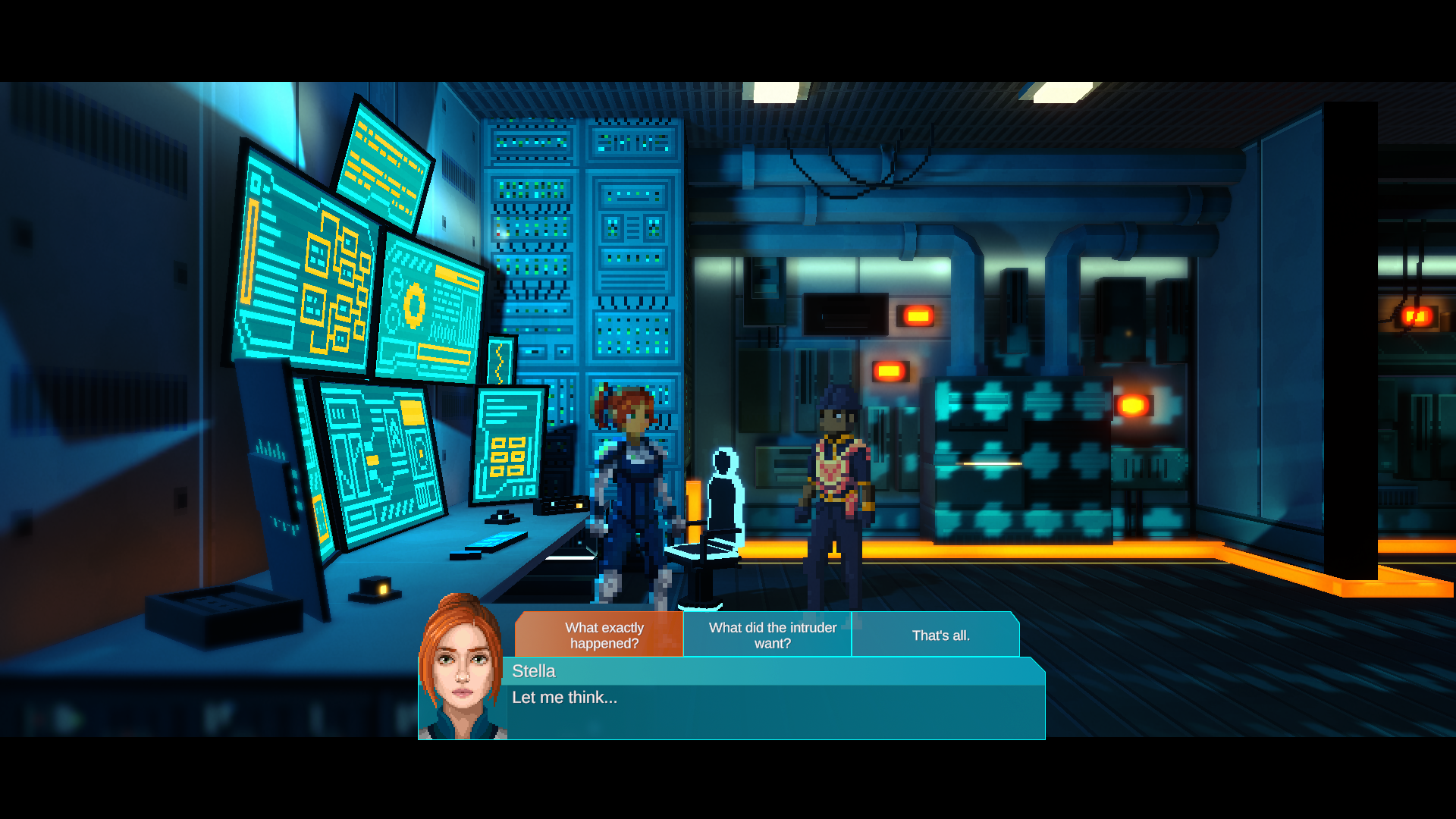
In conclusion, although handling the huge amount of evidence was not always perfect, and navigating Zephyr could prove tiresome after a while, the story of Between Horizons works great, feels believable and I liked how closely tied it was to the detective work. The story touches on many thought-provoking topics, that apply to our society, even though it takes place in settings that are so strange and distant to us. While there is a large number of characters you meet on your journey, each one of them feels unique, with believable motivations. Writing is definitely one of the strengths of this game. The cases range from very easy to complex puzzles that I sometimes didn’t figure out how to solve, but the story is ready for that and you never get stuck just because you don’t know the solution. It can be hard to admit defeat at certain points, but that makes the game even more authentic and I recommend you to not look up the solutions to the cases online, at least for the first playthrough. Just see where the story takes you.
Between Horizons is a good fit for lovers of a solid sci-fi narrative and for detectives who can overlook minor shortcomings in the investigation process. The game is available on Steam and GOG for 16 EUR and completing it for the first time will take you around 6 to 8 hours.


